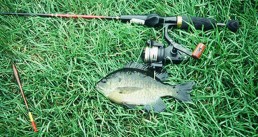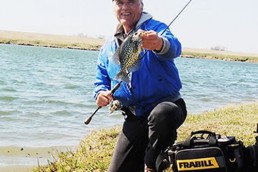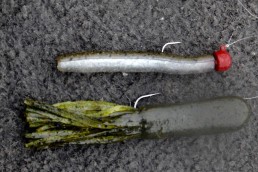How to keep your Float Rig from Blowin’ in the Wind
SHARE THIS POST
According to Bob Dylan, “The answer my friend is blowin’ in the wind, the answer is blowin’ in the wind.” Say it twice, Bob.
In fishing, there’s nothing more frustrating than trying to fish a float, or bobber, when it’s windy. Thankfully, that subject has been addressed. On another positive note, there are several key floats designed to help you when the wind doesn’t blow, too.
These should enable you to deal with most of the situations you’ll find when you’re fishing with floats.
First, the key to fishing a float is to make it as easy as possible for the fish to take it under. Sometimes, especially with bigger panfish, the slightest resistance of the float can be enough for said fish to abandon the effort and drop the bait.
The less resistance the float has against the water surface, the easier it is to take under. This is where the longer, narrow pencil-type bobber shines. Rigging them as slip bobbers makes them even more effective and versatile.
In a nutshell, slip bobbers usually have a small knot of a Dacron-type line that can be slipped on the line and pulled tight. A small bead follows that. The bead stops the knot from going through the hole in the bobber. In essence, it becomes your depth setter.
Slip-bobbers have a tube going through them. After the bead is put on, the line goes through the bobber and a hook is tied on and weight attached. The small knot of line passes through the guides easily, lies on the reel spool and doesn’t hinder the casting of the rig.
Are you enjoying this post?
You can be among the first to get the latest info on where to go, what to use and how to use it!
Since it is not completely fixed, you can adjust the depth by sliding the knot up or down the line. You can fish any depth and still reel the line up where it is easy to cast. A fixed float would be very tough to deal with if you wanted to fish 10 feet deep. You can set the knot on a slip bobber 10 feet deep and still reel up the line to make a normal cast. When it hits the water, the weight pulls the line down to the bead/knot. It’s the easy way to fish deeper water with a float.
As a side note, using a fixed pencil float has its day in shallower water. Just pinch it on. Shallow water means no long line to deal with. I use pencil floats that are weighted on the bottom to help with casting distance, too.
Back to the wind. Wind creates waves, which can push a bobber through and out of the fish zone rather quickly. Everybody except the wind knows that you have to keep the float where the fish are if you want to catch them.
Thill’s fishing floats has a system to deal with the wind. They make a float called the TG Waggler, specifically for fishing in the wind.
The Waggler has along pencil-type top on it, which has a bright color at the top for easy sight. The lower part of the float is larger and more oval shaped. When rigged, enough weight is used to submerge the bulbous bottom, leaving just the narrow pencil top above water. The fact that most of the weight is beneath the surface allows it to hold its position, not letting the wind have its way. There is a lot less resistance when a fish bites and takes the float under. Plus, the weight makes it much easier to cast greater distances, too.
While there are a wide variety of floats available for today’s angler, like those aimed at shy and light biters, these three can get most jobs done and should be a standard in your floats or live bait tackle box.
MWO
SHARE THIS POST
Did you enjoy this post?
You can be among the first to get the latest info on where to go, what to use and how to use it!
Tom Luba
Tom Luba is a freelance outdoor writer living in New London, Wis. He has written about open water fishing for more than 35 years.




Please, send me a pic float for fishing in the lake water
I use the waggler rigged bobber in the spring to probe shallow water for big bluegills and redear sunfish. It is a great setup for when the fish are biting lightly and don’t want to feel the pressure of a larger float. I also like to use the waggler rigged bobber for spawning channel cats when they move into the shallows in late spring. Channel catfish are super sensitive to any pressure on the line when they bite.